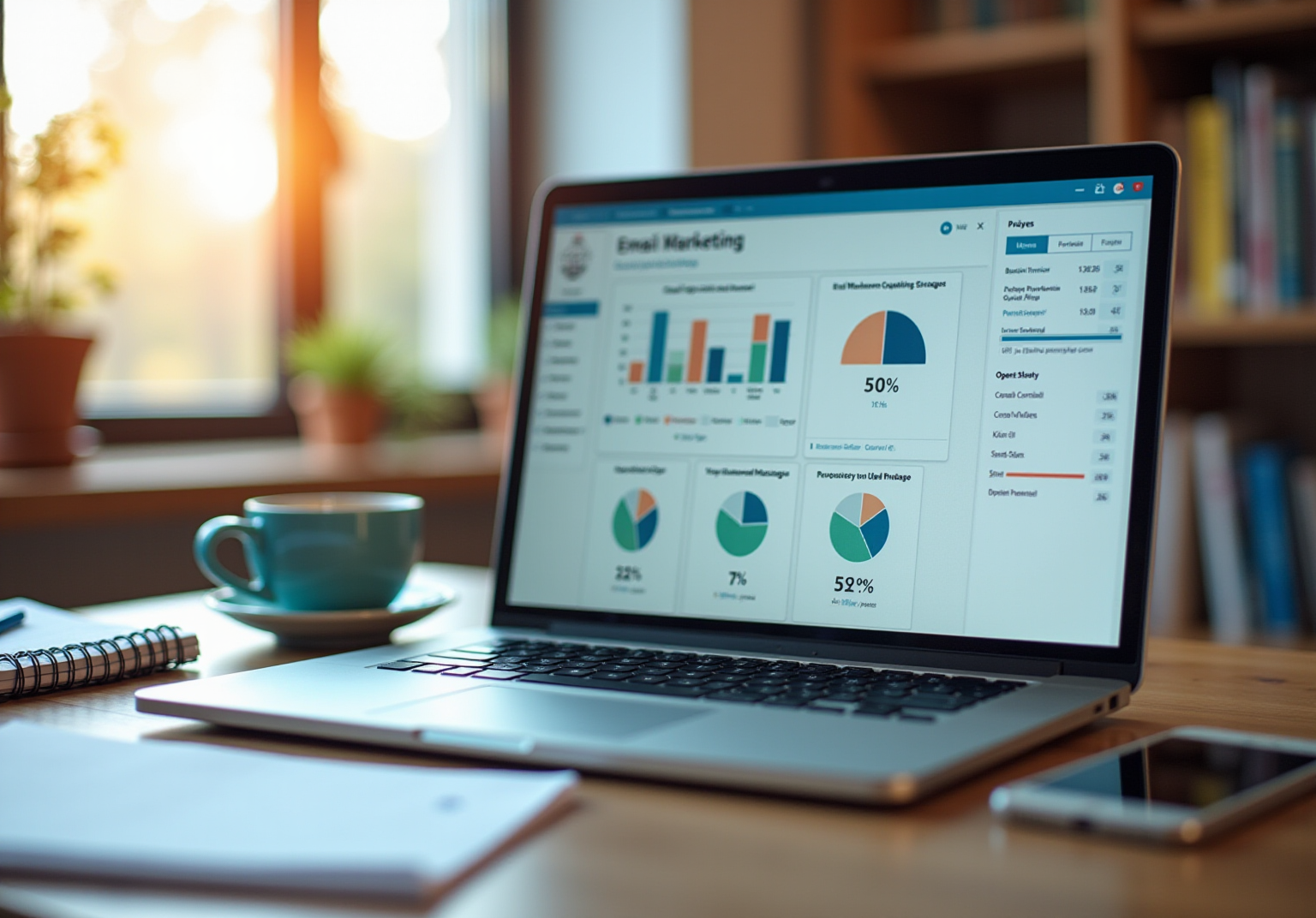
Overview
The article presents ten effective email triggers designed to significantly enhance customer engagement for direct-to-consumer (DTC) brands. It articulates this by detailing various strategies, including:
- Personalized welcome emails
- Abandoned cart reminders
- Feedback requests
Each strategy is supported by compelling statistics and expert insights that illustrate how tailored communications can cultivate deeper connections and drive higher conversion rates.
Introduction
Enhancing customer engagement through email marketing stands as a pivotal strategy for direct-to-consumer (DTC) brands intent on cultivating enduring relationships with their audience. By leveraging targeted email triggers, businesses can craft personalized interactions that resonate profoundly with consumers, thereby driving both loyalty and sales. Yet, amidst a plethora of options, how can brands discern which email triggers will deliver the most significant impact? This article delves into ten powerful email triggers capable of transforming customer engagement and empowering DTC brands to thrive in an increasingly competitive marketplace.
Parah Group: Optimize Email Triggers for Enhanced Customer Engagement
Enhancing email triggers is vital for elevating client interaction, allowing companies to forge meaningful connections with their audience. By employing data-informed strategies, organizations can develop customized email campaigns that resonate with their consumers. This approach necessitates a thorough analysis of consumer behavior and preferences to identify the most effective email triggers. For instance, the Welcome Series serves as an initial touchpoint, introducing the company and motivating first purchases, while the Browse Abandonment Flow effectively re-engages potential customers by reminding them of products they have shown interest in.
Experts assert that segmentation is paramount in this context, as it empowers companies to use email triggers to deliver the right message at the opportune moment, significantly enhancing engagement and conversion rates. AHSAN TAZ remarks, "A/B testing shows what genuinely engages audiences," underscoring the importance of perpetually refining content and design based on audience insights. As we look towards 2025, digital marketing remains a critical revenue stream for DTC brands, yielding an impressive $38 in ROI for every $1 invested. Conversely, ineffective messaging strategies can result in negative perceptions, as evidenced by the case of Bombas, where excessive and irrelevant communications damaged client relationships. This underscores the necessity of a strategic approach to marketing communications, prioritizing accuracy, customization, and consumer experiences over mere message frequency. To effectively implement these strategies, companies must prioritize a deep and behaviors.
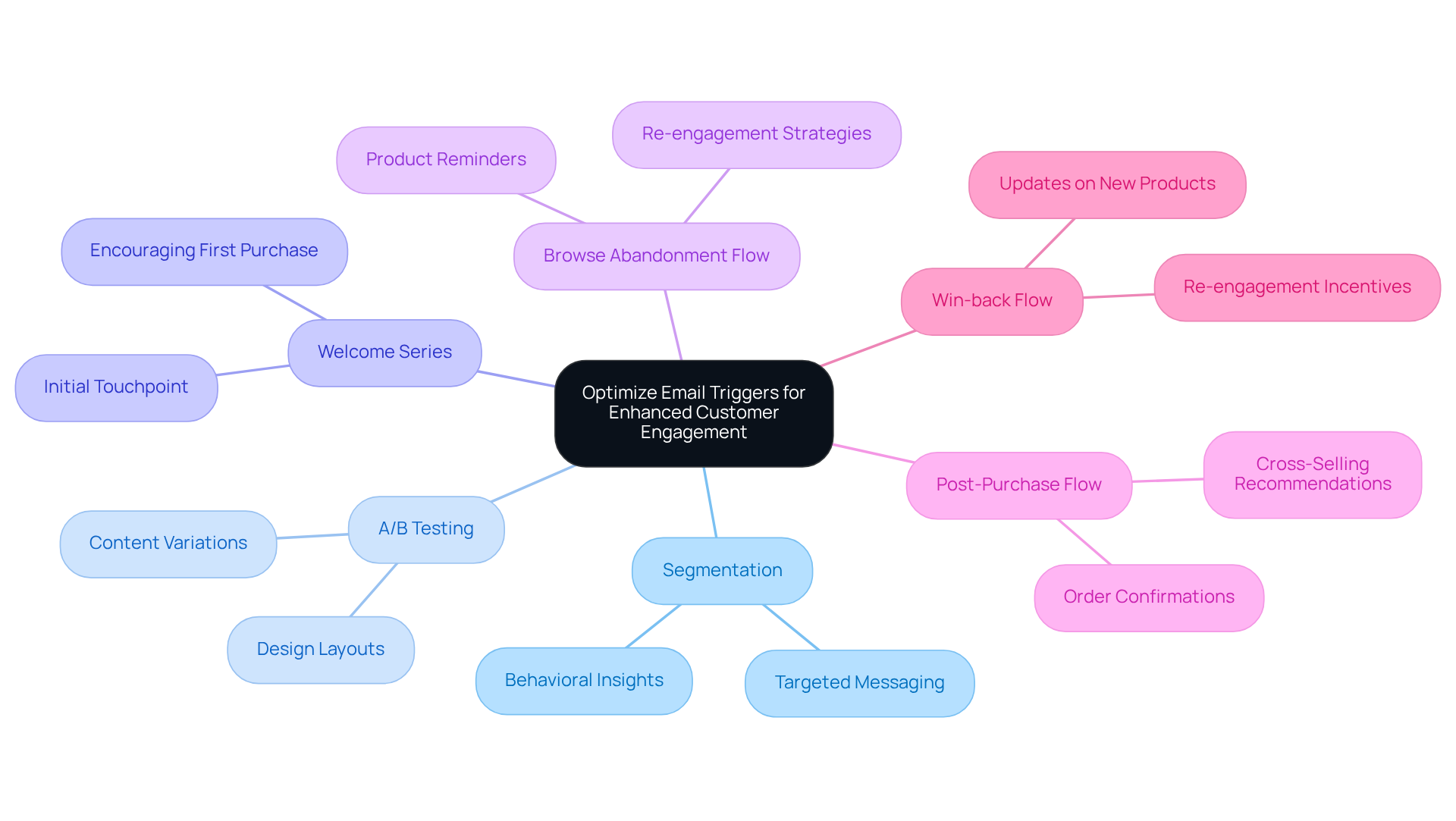
Welcome Emails: Initiate Customer Relationships Effectively
Welcome messages achieve an impressive across various sectors, establishing them as a vital touchpoint for new subscribers. These communications should encompass:
- A warm greeting
- An introduction to the brand
- Clear expectations for future interactions
Personalization is crucial; incorporating the subscriber's name and offering a unique discount can significantly enhance engagement. In fact, welcome messages generate up to 320% more revenue per communication than standard promotional content. Furthermore, customized messages are shown to achieve six times greater transactional rates compared to their non-customized counterparts, while also enhancing click-through rates by an average of 14% and conversions by 10%.
By crafting tailored greeting messages, DTC companies can cultivate deeper connections with their audience from the outset. Notably, 74% of individuals anticipate receiving a welcome message shortly after subscribing to a mailing list, which boosts customer loyalty and encourages immediate purchases.
Integrating these welcome messages into a broader Conversion Rate Optimization strategy that utilizes email triggers can enhance profitability, ensuring that every interaction aligns with the brand's growth objectives and contributes to achieving lasting success.
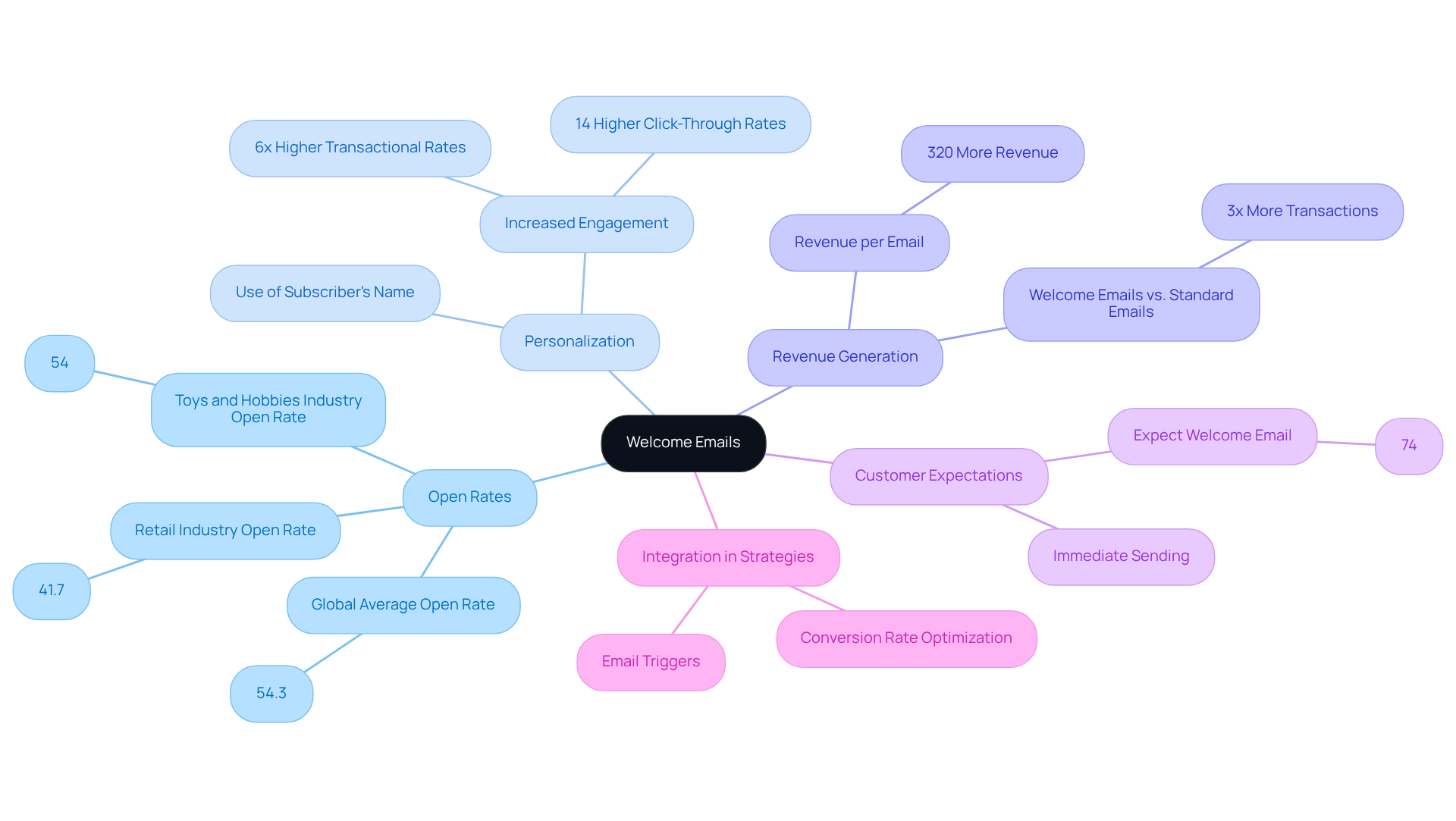
Abandoned Cart Reminders: Recover Lost Sales Opportunities
Abandoned cart messages boast an impressive average open rate of 50.5%, recovering approximately 3.33% of lost sales. To , these messages should be dispatched within one hour of cart abandonment, ensuring that the buyer's intent to purchase remains fresh. Each message must include a clear call to action, prompting clients about the specific items they left behind.
Furthermore, incorporating incentives such as discounts or free shipping can significantly enhance the likelihood of conversion, effectively addressing common reasons for cart abandonment, such as unexpected costs. By leveraging these strategies, brands can transform potential losses into recovered revenue.
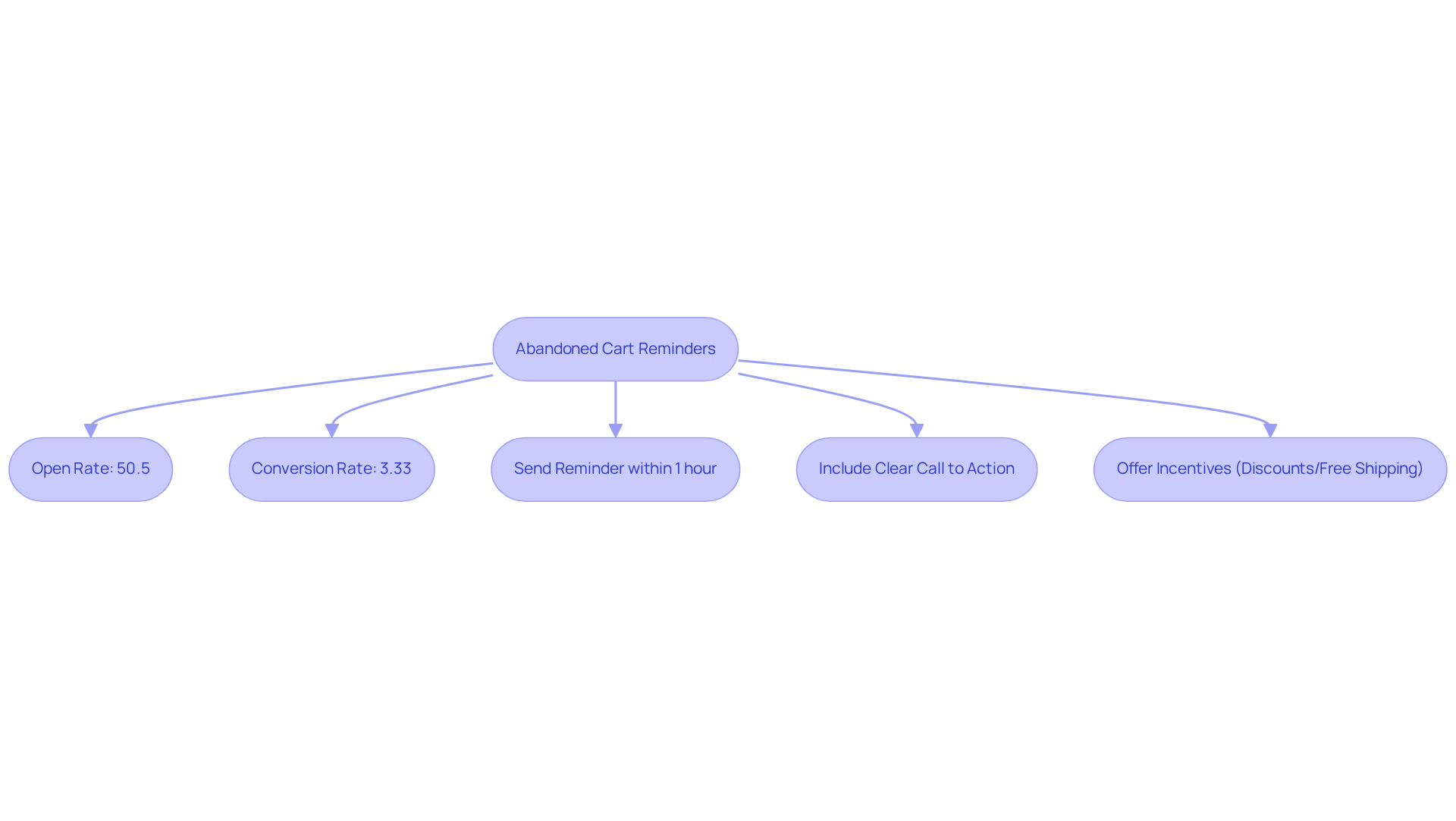
Transactional Emails: Build Trust Through Clear Communication
Transactional messages, including , are automated communications that use email triggers based on specific client actions, boasting an impressive open rate of 80%. To maximize their effectiveness, these messages must be clear and concise, delivering all essential transaction details.
- Personalization is crucial; incorporating elements such as the individual's name, relevant product information, and adjusting timestamps to their time zone not only enhances the customer experience but also fosters trust.
- Marketing experts emphasize that clear messaging in these communications is essential, as it reassures clients about their purchases and strengthens the reliability of the company.
- Furthermore, ensuring mobile adaptability and utilizing clear subject lines are critical best practices for direct-to-consumer (DTC) businesses, greatly enhancing client satisfaction and loyalty.
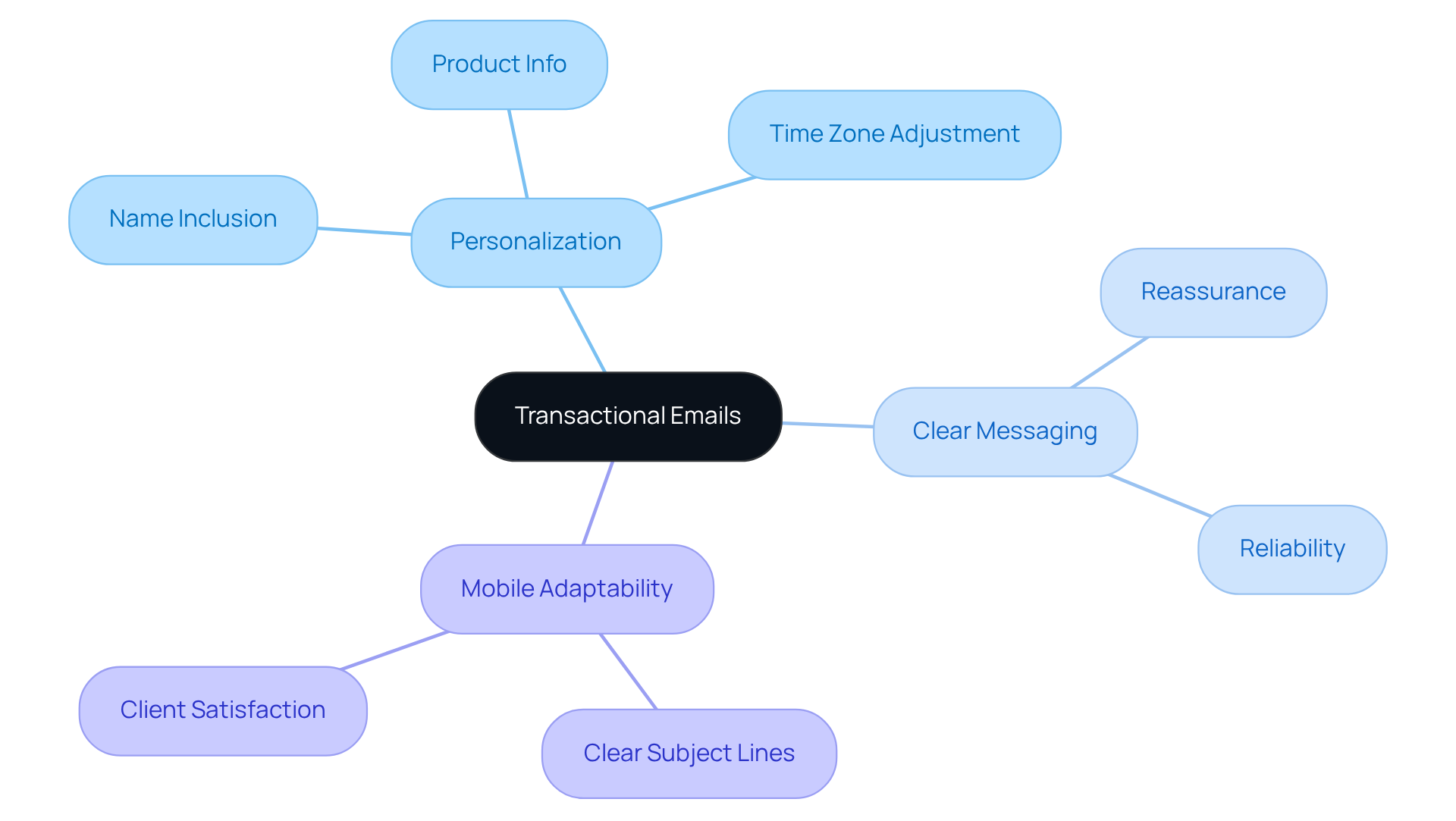
Reactivation Emails: Re-Engage Inactive Customers Effectively
To successfully re-engage inactive clients, it is imperative that email triggers in are personalized and deliver clear value. Implementing tiered win-back campaigns is a powerful strategy; these campaigns should present escalating offers, highlight new products, and remind customers of their past positive experiences with the company.
For instance, case studies from Parah Group illustrate that companies employing similar strategies have achieved remarkable success rates, with reactivation campaigns yielding results as high as 29%. Furthermore, marketing specialists emphasize that email triggers, through customized messages, significantly enhance engagement, as consumers receiving personalized offers are more likely to return.
By focusing on these strategies, DTC brands can effectively reignite interest and cultivate loyalty, ultimately supporting revenue growth and enhancing profitability.
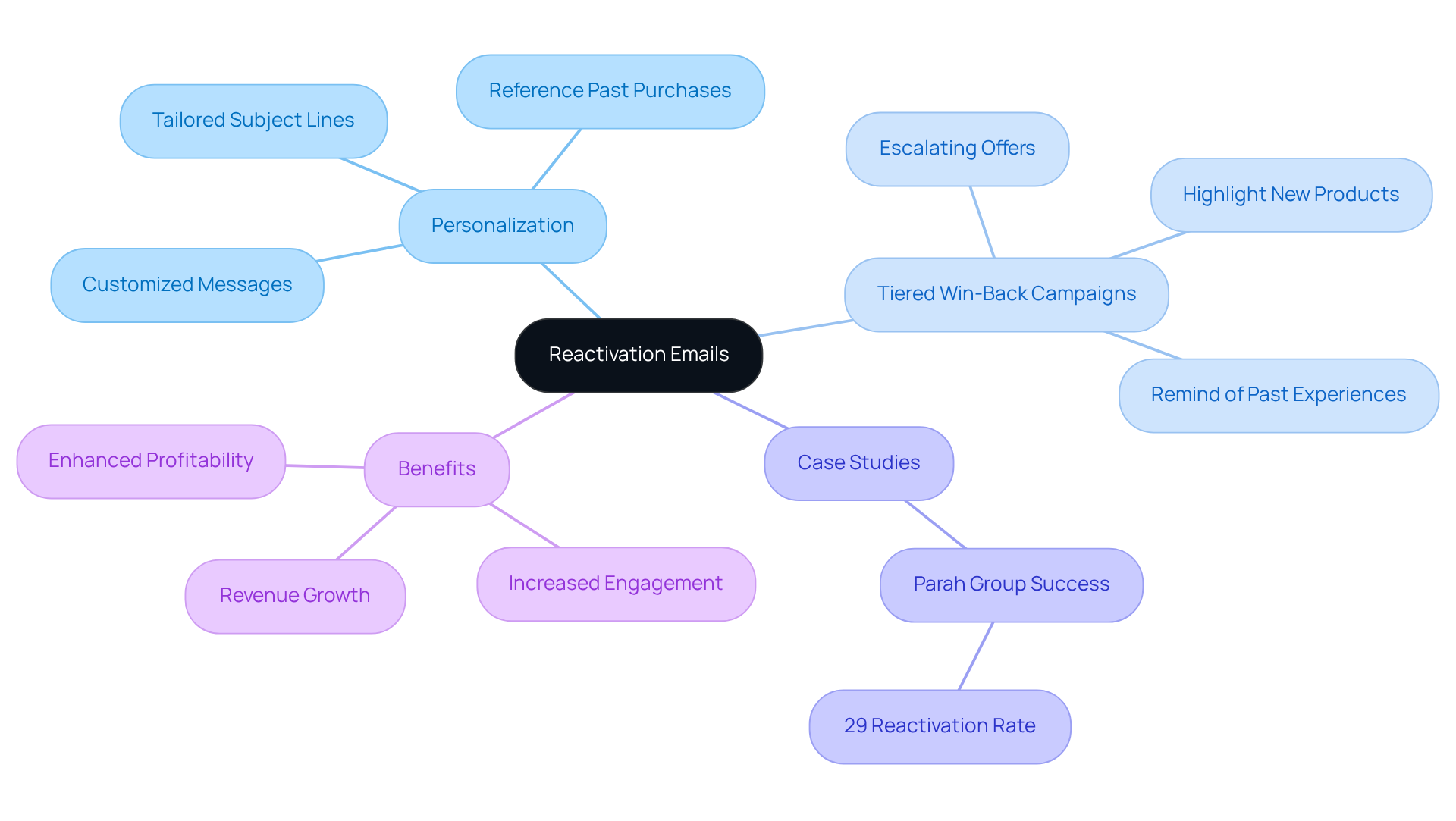
Feedback Request Emails: Gather Valuable Customer Insights
Email triggers for feedback requests must be dispatched promptly after a purchase or interaction. It is crucial that these communications are concise and feature a compelling call to action that encourages clients to share their insights.
Research demonstrates that providing incentives, such as discounts on future purchases, can substantially elevate response rates. This feedback is not merely a formality; it serves as a vital resource for , ultimately enhancing client satisfaction and loyalty.
By proactively soliciting consumer feedback, brands can pinpoint areas for improvement and adjust their offerings to better align with buyer needs, thereby nurturing a cycle of continuous enhancement. Additionally, client feedback significantly enriches the overall client experience; indeed, 93% of consumers indicate that a positive experience is essential to their loyalty.
Regularly requesting feedback not only cultivates customer loyalty but also positions companies for sustained success by using email triggers to inform marketing and product development strategies.
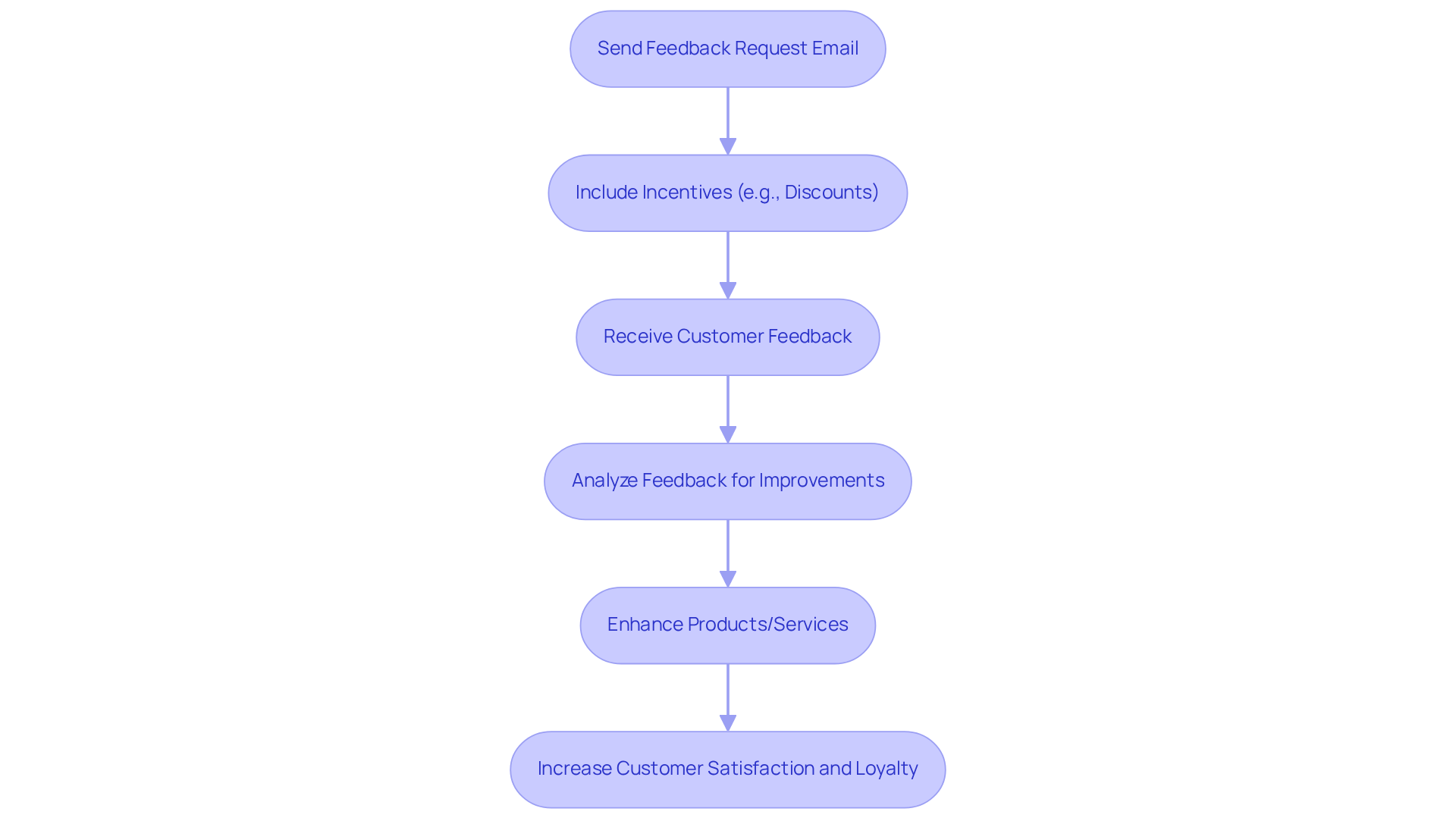
Event Notification Emails: Drive Engagement Through Timely Updates
Event notification messages must convey essential details, including the event date, time, venue, and specific instructions. These messages should be dispatched well in advance, accompanied by as the event date approaches. Engaging subject lines and visually appealing elements are crucial; they significantly enhance open rates and drive attendance. By prioritizing these components, organizers can ensure effective communication and maximize participation.
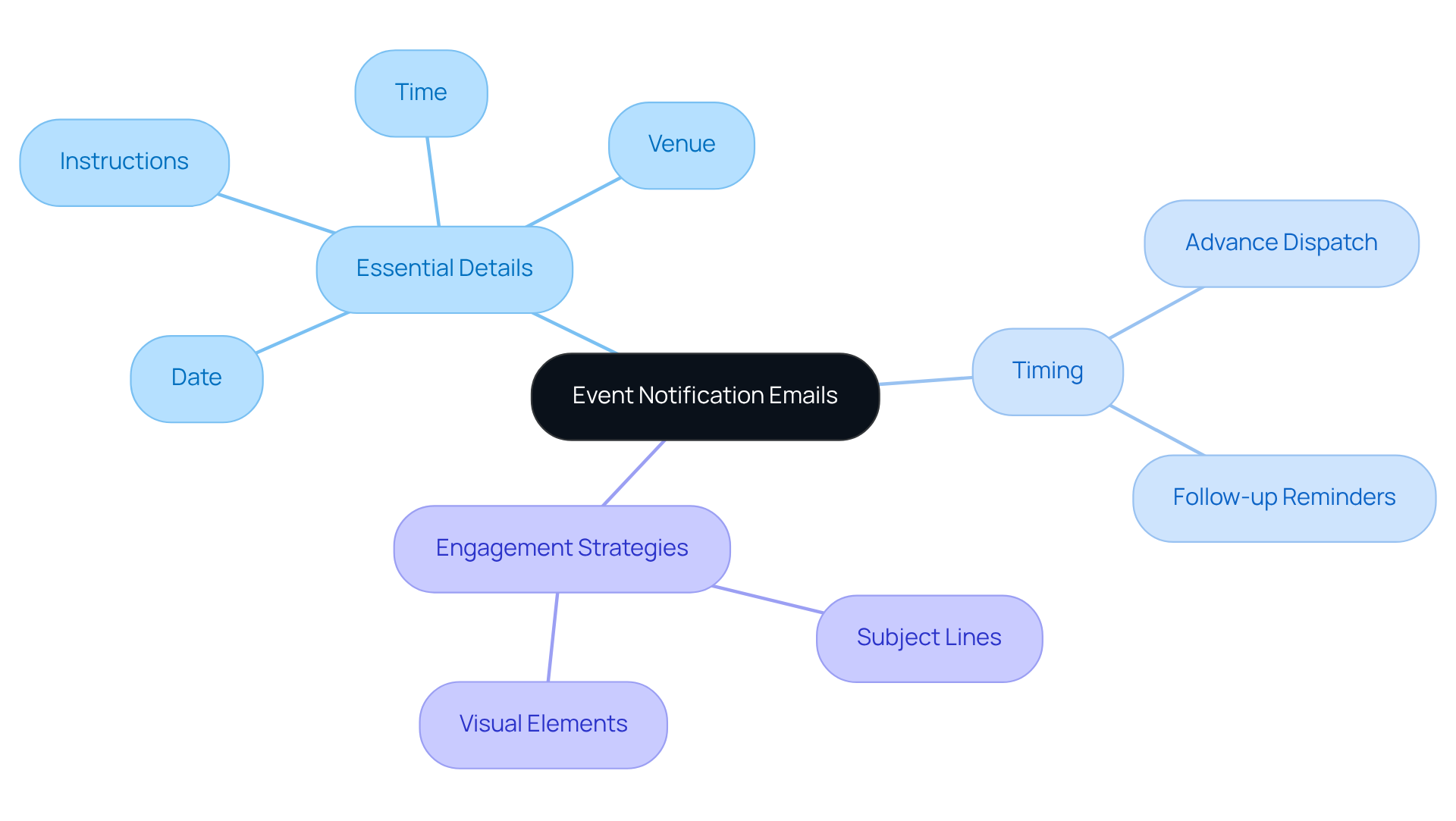
Birthday Emails: Celebrate Customers to Boost Loyalty
Personalized birthday messages are essential for maximizing customer engagement and driving revenue. These messages should not only include tailored greetings but also feature enticing special offers, such as discounts or exclusive products. By sending these communications a few days before the individual's birthday, businesses can effectively build anticipation and excitement. This strategy has proven remarkably effective, with birthday messages per message compared to standard promotional communications. Such a significant increase underscores the power of personalized marketing in today's competitive landscape.
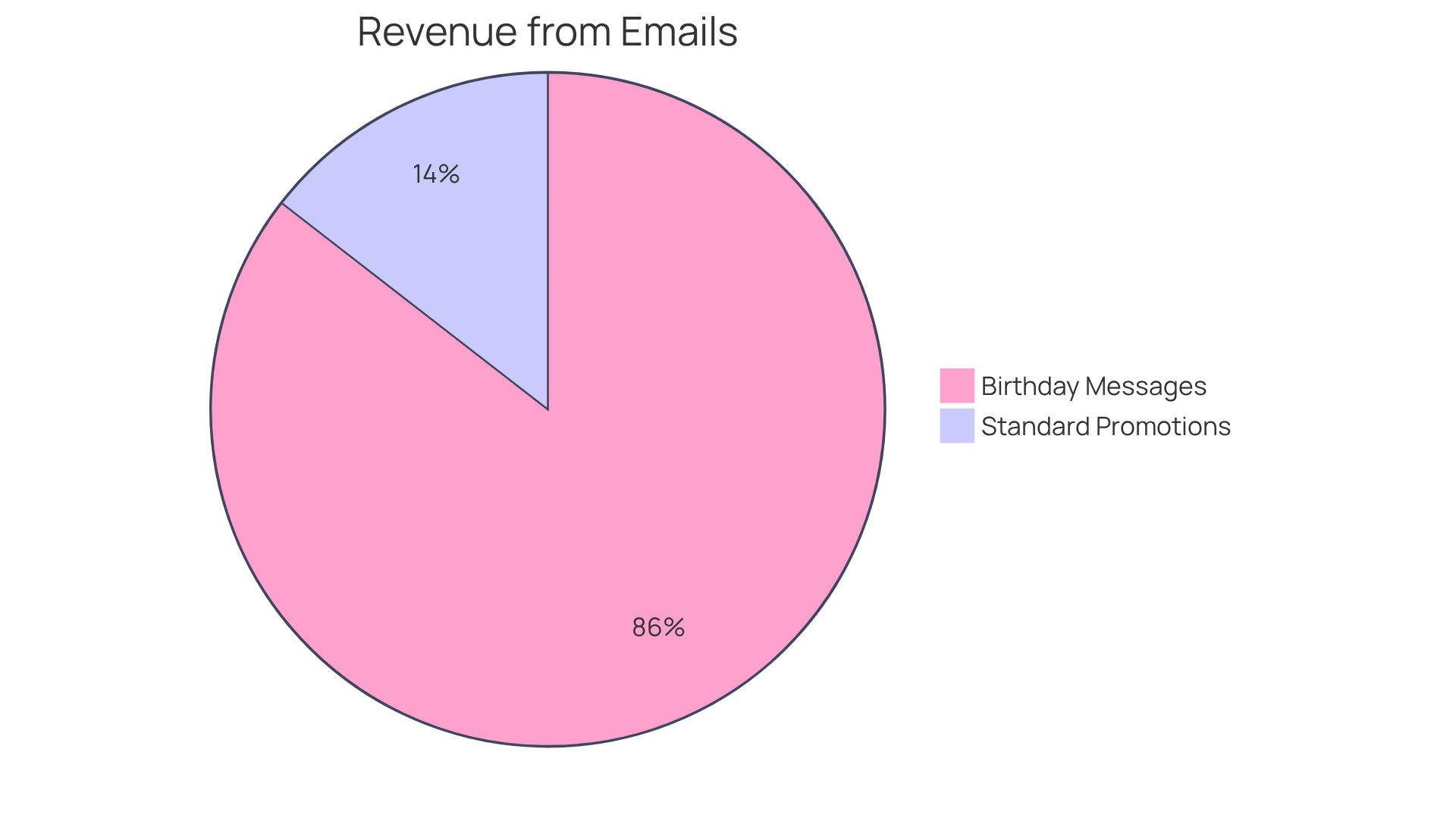
Product Recommendation Emails: Personalize Offers to Increase Sales
Product recommendation emails must be tailored to individual preferences and past purchases, mirroring the personalized strategies that Parah Group has successfully implemented in their case studies. By executing focused suggestions, gamifying the shopping experience, and emphasizing social proof, companies have reported significant increases in conversion rates and average order values.
The integration of enhances the precision of these recommendations, ensuring customers receive offers that align with their interests. Furthermore, clear calls to action and visually appealing layouts can substantially boost conversions, as evidenced by a $30M apparel company's +35% improvement in conversion rates through strategic optimizations.
By adopting these proven strategies, DTC brands can transform their communications into a vital driver of profitability.
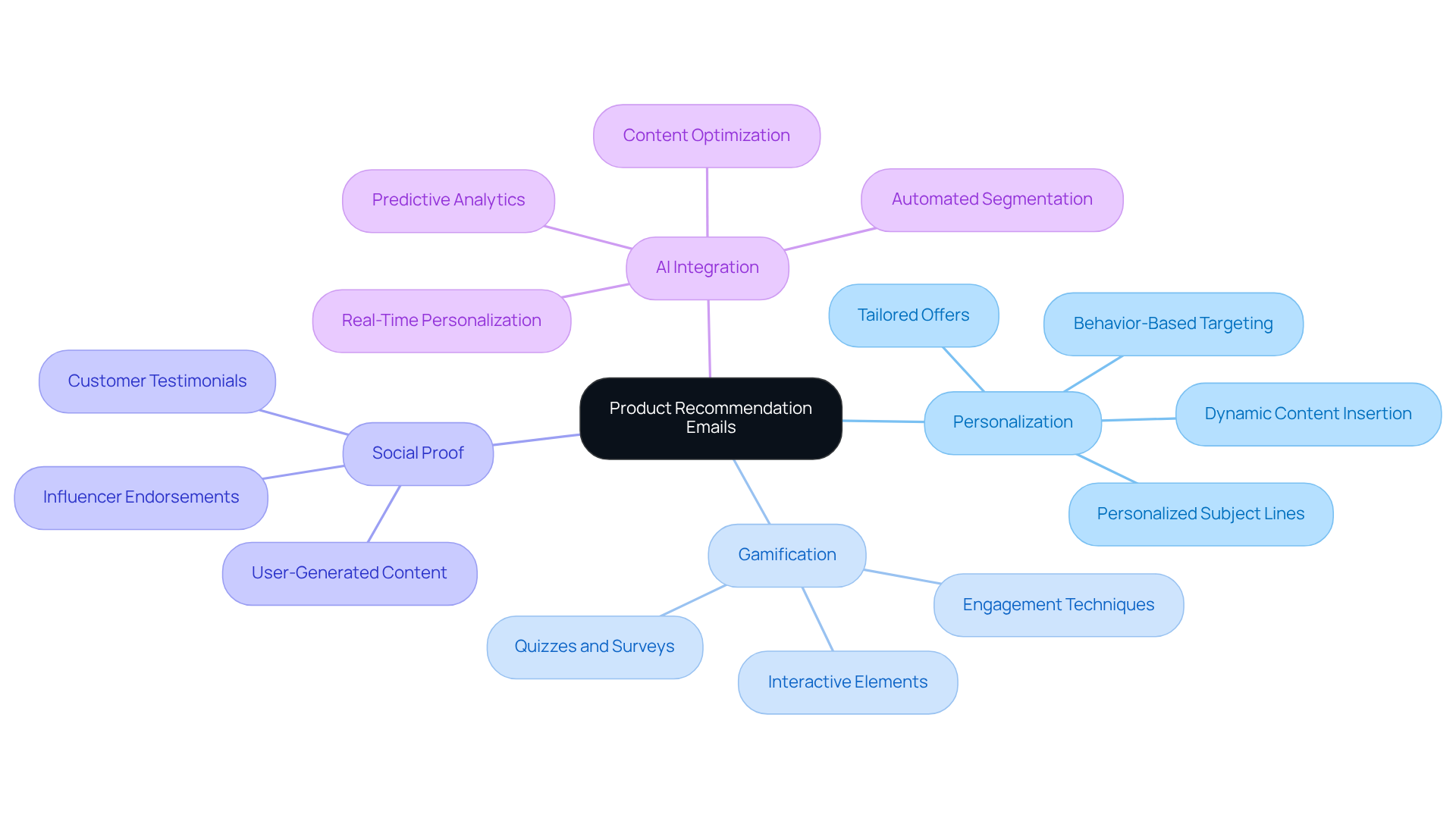
Reminder Emails: Maintain Engagement with Timely Notifications
Reminder emails must be succinct and clearly convey the required action from the recipient, whether for appointments, upcoming events, or subscription renewals. Integrating a sense of urgency significantly enhances their effectiveness; for instance, messages that establish a deadline can double the likelihood of client engagement. A well-crafted call to action is crucial, motivating clients to act swiftly. Best practices indicate that personalization—such as including relevant offers or reminders linked to important dates—can further elevate engagement. Effective e-commerce strategies frequently leverage these principles, ensuring that email triggers not only inform but also compel customers to undertake desired actions. By implementing a comprehensive Conversion Rate Optimization strategy, as advocated by Parah Group, which encompasses rigorous testing and alignment of paid ads with landing pages, brands can optimize the impact of their reminder emails, driving substantial growth and improved conversion rates.
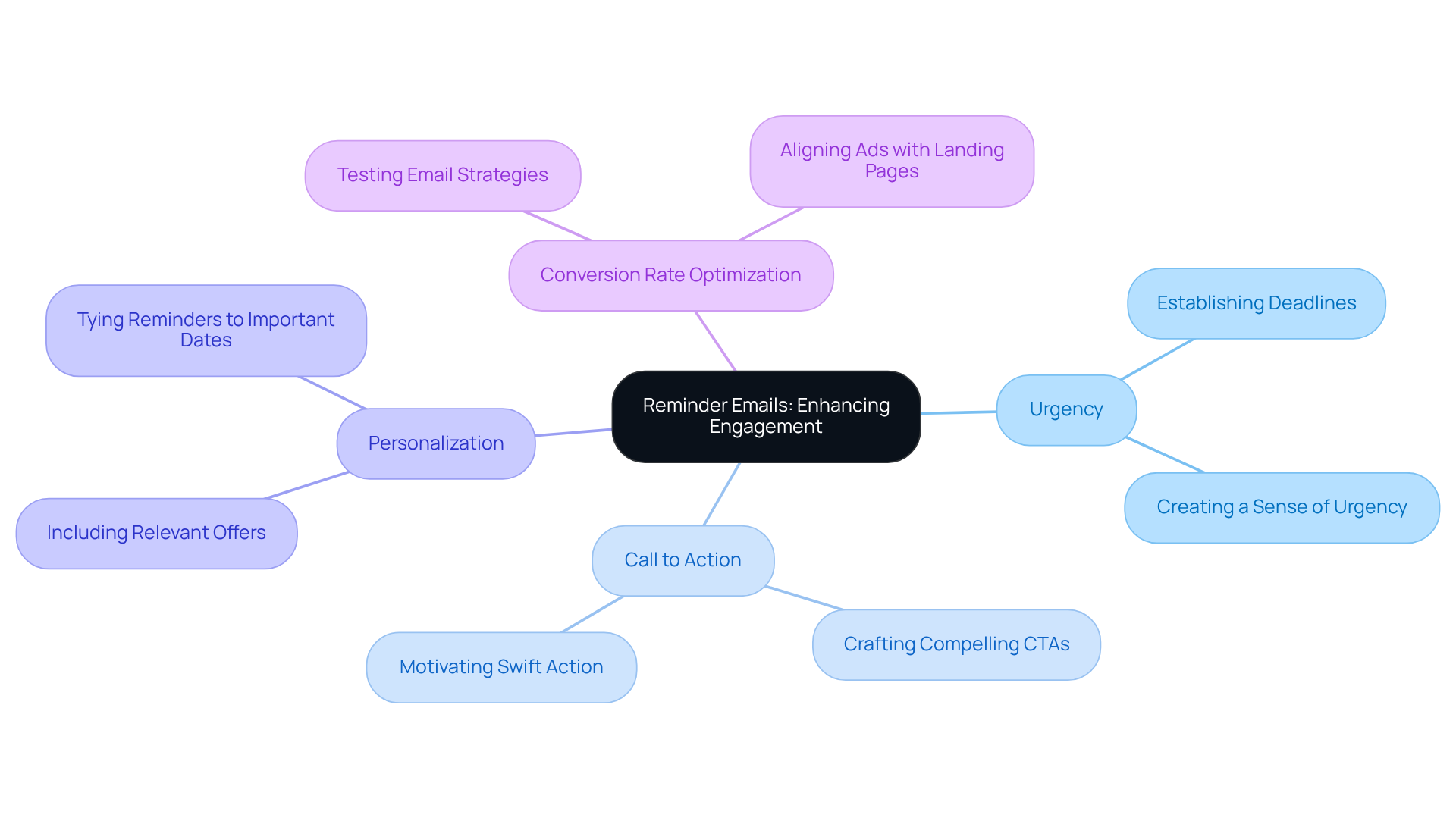
Conclusion
Enhancing customer engagement through strategic email triggers is imperative for DTC brands striving to forge lasting connections with their audience. By harnessing data-driven insights and personalized messaging, companies can markedly elevate their communication efforts, thereby enriching customer experiences and driving revenue growth.
This article delineates ten effective email triggers capable of revolutionizing how brands engage with their customers:
- Welcome emails that lay the groundwork for initial relationships
- Abandoned cart reminders that recover lost sales
- Personalized product recommendations that align with individual preferences
- Feedback requests that yield valuable insights
- Reactivation emails to reconnect with dormant customers
Each tactic underscores the significance of timing, clarity, and personalization in boosting engagement and conversion rates. Moreover, the importance of feedback requests and reactivation emails is crucial, as they yield valuable insights and opportunities to reconnect with dormant customers.
Ultimately, the triumph of DTC brands in the fiercely competitive digital landscape hinges on their capacity to execute these email marketing best practices. By prioritizing tailored communication and comprehending consumer behavior, brands can not only enhance customer loyalty but also position themselves for sustained growth. Embracing these strategies will pave the way for meaningful interactions that resonate with audiences and propel business success well into the future.
Frequently Asked Questions
Why is optimizing email triggers important for customer engagement?
Optimizing email triggers is vital for elevating client interaction, allowing companies to forge meaningful connections with their audience through customized email campaigns that resonate with consumers.
What is the role of segmentation in email marketing?
Segmentation empowers companies to use email triggers to deliver the right message at the opportune moment, significantly enhancing engagement and conversion rates.
What is the significance of A/B testing in email campaigns?
A/B testing shows what genuinely engages audiences, emphasizing the importance of continuously refining content and design based on audience insights.
How does digital marketing perform for DTC brands?
Digital marketing remains a critical revenue stream for DTC brands, yielding an impressive $38 in ROI for every $1 invested.
What can happen with ineffective messaging strategies?
Ineffective messaging strategies can lead to negative perceptions and damaged client relationships, as seen in the case of Bombas, where excessive and irrelevant communications were problematic.
What should welcome emails include to be effective?
Welcome emails should include a warm greeting, an introduction to the brand, and clear expectations for future interactions.
How effective are welcome emails in terms of engagement?
Welcome emails achieve an impressive open rate of 54.3% and generate up to 320% more revenue per communication than standard promotional content.
What impact does personalization have on welcome emails?
Personalization, such as incorporating the subscriber's name and offering a unique discount, can significantly enhance engagement, leading to six times greater transactional rates and improved click-through and conversion rates.
When should abandoned cart reminders be sent to maximize effectiveness?
Abandoned cart reminders should be dispatched within one hour of cart abandonment to ensure that the buyer's intent to purchase remains fresh.
What strategies can enhance the effectiveness of abandoned cart messages?
Including a clear call to action and offering incentives like discounts or free shipping can significantly enhance the likelihood of conversion by addressing common reasons for cart abandonment.
FAQs











